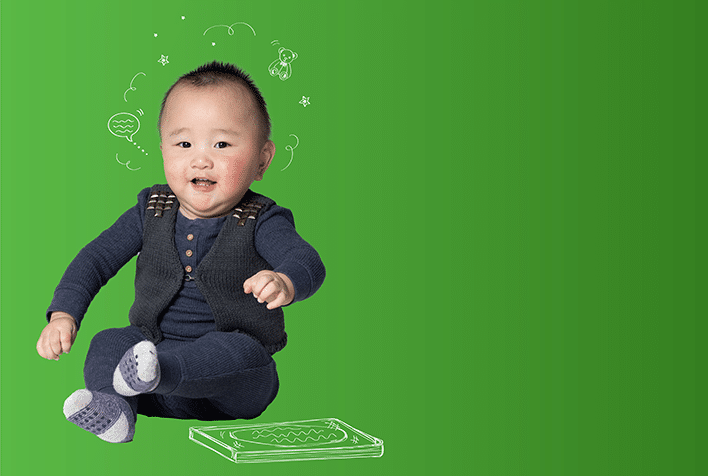Infants have typical and distinct spontaneous “general movements” from before birth right through to 20 weeks post term. Infants whose general movements are absent or abnormal are at higher risk of neurological conditions, in particular cerebral palsy.
The General Movements Assessment is used to identify absent or abnormal general movements and, depending on the type of general movements abnormality, can be highly predictive of cerebral palsy by about 3 months of post term age. Intervention can start very early, with potentially better outcomes, if an infant is diagnosed as at risk of cerebral palsy using the General Movements Assessment.
General movements are assessed with the awake infant lying on their back while they are calm and alert. The infant should not have any toys or pacifiers and parents may be watching nearby but not interacting with their baby. The baby is videoed for 3-5 minutes and the assessment is scored from the video. In Australia, a growing number of allied health and medical personnel have been trained to observe and score General Movements Assessments.
A General Movements Assessment may give information on how your baby’s neurological system is developing if they are under 20 weeks post term age and there were medical concerns at birth (such as prematurity, lack of oxygen, stroke, or congenital heart disease). The assessment is not currently used as a screening tool for healthy babies.
Please speak to your medical practitioner or therapist if you have any concerns about your baby.
Some therapy staff at Cerebral Palsy Alliance are qualified to perform the General Movements Assessment. A growing number of tertiary hospitals across Australia also have staff who are able to use the assessment.
Videos taken by parents and others can be used by assessors. To take a video, the baby should be lying on their back, lightly dressed (no socks) and in a calm state. Do not interact with the baby. Their spontaneous movement should be observed.
Babies should not be sucking a dummy or playing with a toy. Film the baby quietly from above, making sure the baby’s hands and feet can be seen for 3-5 minutes. An assessor will need to know the baby’s date of birth, date of video and gestational age. The best age to take the video is 12-14 weeks after the baby’s due date.
For information about the location of qualified assessors in Australia, please email Dr Cathy Morgan, Research Fellow at Cerebral Palsy Alliance.
A 4 day course is offered by the General Movements Trust and regular courses are run in Australia. Contact Dr Cathy Morgan for information about courses to become qualified in using General Movements Assessment.
References:
Fully funded by CPA donors, fundraising and Medicare, the CPA Early Diagnosis Clinics aims to fast track diagnosis and enable quicker access to early interventions, family support and better outcomes for the future.
